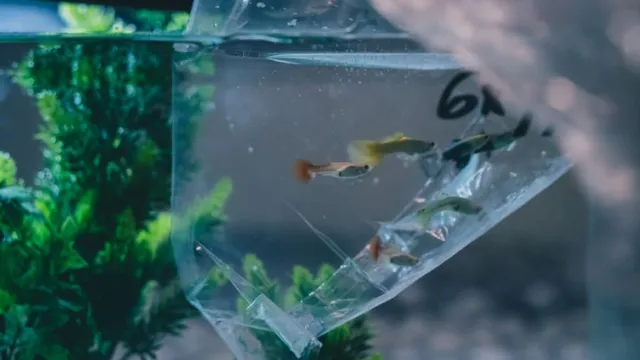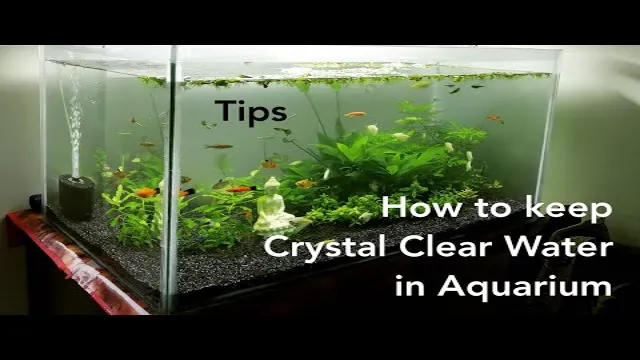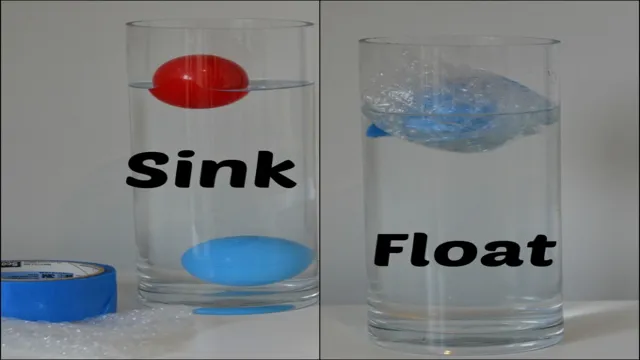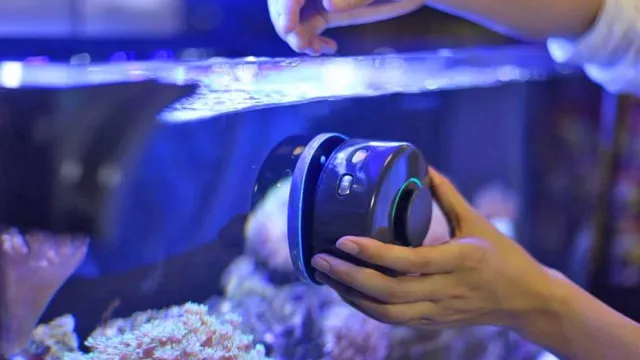Have you recently purchased some platies for your aquarium, but you’re wondering how to properly acclimate them? Well don’t fret, because we’ve got you covered! Acclimating new fish to your aquarium is an important step in their long-term survival and overall health. It’s not as simple as just plopping them in the tank and hoping for the best. In this blog, we’ll provide you with some helpful tips and tricks on how to acclimate your platies and ensure a smooth transition into their new home.
So grab your fish net and let’s dive in!
Preparing for Arrival
Acclimating platies to your aquarium requires some preparation to ensure their smooth arrival. Before bringing them home, make sure your tank is fully cycled and the water parameters are stable. You can acclimate them to your tank by slowly introducing them to their new environment.
One way to do this is by floating the bag they come in for about 15 minutes to equalize the temperature, and then adding small amounts of tank water to the bag every 10-15 minutes. Repeat this process for about an hour until the fish are comfortable in their new surroundings. This helps prevent shock and gives them time to adjust to the new water.
Make sure you provide plenty of hiding spaces and a balanced and nutritious diet for your platies to keep them healthy and happy. By following these steps, you can ensure a successful introduction of new platies to your aquarium.
Checking Water Parameters
Preparing the aquarium water conditions for your new fish is an essential step in ensuring their health and happiness. It’s crucial to check the water parameters regularly to maintain a stable environment for your aquatic pets. The primary water parameters that need to be monitored include temperature, pH, ammonia, nitrite, and nitrate levels.
Before the fish arrive, it’s recommended to test the water at least twice a week for two weeks to ensure that it’s safe and stable. For instance, a high level of ammonia can harm the fish and even cause death. Similarly, fluctuations in pH can stress the fish and make them more susceptible to diseases.
Therefore, it’s essential to maintain the right water conditions that are necessary for your fish’s species. By doing this, you can ensure their long-term well-being and enjoy watching them thrive in their new home.

Setting up Quarantine Tank
Setting up a quarantine tank is an essential step towards ensuring the health and safety of your aquatic pets. Before bringing your new fish home, it is crucial to prepare your quarantine tank properly. The first step is to clean the tank thoroughly, removing any debris or algae buildup from the previous use.
Next, add fresh water and treat it with a dechlorinator to neutralize any harmful chemicals. Allow the filter to run for at least a day before introducing any fish to the tank. It is also important to ensure that the tank is adequately cycled before adding any fish.
The cycle process involves growing beneficial bacteria that help convert toxic ammonia into safer nitrite and nitrate compounds. You can use a test kit to check the water parameters regularly and monitor the progress of the cycle. By taking these steps, you can create a safe, healthy environment for your new fish and prevent the spread of diseases to your established aquarium.
Adjusting Water Parameters
If you’re just starting out with keeping platies in your aquarium, it’s crucial to properly acclimate them to your water parameters. This means gradually introducing them to your tank’s temperature, pH level, and overall water quality. Sudden changes in these factors can be very stressful to fish, and can even lead to illness or death.
To acclimate your platies, start by floating their bag in the aquarium for about 15-20 minutes. During this time, the water temperature in the bag will gradually adjust to match that of the aquarium. After that, add a small amount of tank water to the bag every few minutes over the course of an hour or so.
This will help your platies adjust to the new pH and overall water quality. Once the bag is full, you can release your platies into their new home! Remember to closely monitor your water parameters before and after introducing new fish, as they can have a big impact on the health of your aquarium. (See Also: How to Build a Large Wooden Aquarium in Simple Steps)
Temperature Gradual Increase
If you want to gradually increase the temperature of your aquarium, it’s important to adjust the water parameters. One essential parameter to check is the pH level. A pH level that is too low or too high can cause stress and harm to your fish.
To keep the pH level stable, you can add natural buffers like crushed coral or limestone to the substrate. Another important parameter to consider is water hardness. If your water is too soft, adding a mineral supplement can help stabilize it.
Additionally, make sure to slowly increase the temperature by no more than one or two degrees Fahrenheit per day. Rapid temperature changes can shock your fish and lead to illness or death. By adjusting your water parameters slowly and carefully, you can successfully increase the temperature of your aquarium without harming your fish.
pH Levels Testing and Correction
pH levels testing and correction, adjusting water parameters Have you ever noticed that your aquarium’s pH level is off and your fish seem to be struggling? Maintaining proper pH levels in your aquarium is crucial for the health and well-being of your fish. That’s why it’s important to regularly test and adjust your water parameters. The pH scale ranges from 0 to 14, with 7 being neutral.
Most freshwater fish prefer a pH level between 5 and 5, while marine fish require a pH level between
1 and Testing your aquarium’s pH level is easy and can be done with test strips or a pH meter.
If you find that your pH level is too low, you can use pH buffers to raise it. On the other hand, if your pH level is too high, you can use pH decreasers to lower it. It’s important to make gradual adjustments and avoid sudden changes, as this can shock and stress your fish.
By regularly monitoring and adjusting your aquarium’s pH levels, you can ensure the health and happiness of your fish.
Dissolved Oxygen Levels Maintenance
Maintaining proper levels of dissolved oxygen in your aquarium is crucial for the health of your fish and other aquatic creatures. Luckily, adjusting water parameters is a simple way to ensure that your aquarium has the right level of oxygen. To do this, you should first test the water for its current dissolved oxygen levels.
Depending on the results, you may need to increase or decrease the water temperature or adjust the flow rate of your filters. Alternatively, you can add some oxygenating plants or use aeration devices to increase the oxygen levels in your aquarium. These methods should provide an optimal environment for your aquarium plants and animals to thrive in.
With a balanced ecosystem, you can enjoy watching your aquatic pets grow and flourish.
Introducing Platies to the Aquarium
If you’re interested in adding platies to your aquarium, it’s important to acclimate them properly to ensure they adjust well to their new environment. Start by placing the fish, still in their bag, into the aquarium for at least 20-30 minutes so they can become accustomed to the water temperature. Afterwards, begin slowly adding small amounts of water from the aquarium to the bag over the course of an hour or so.
This will gradually acclimate the fish to the water chemistry of your aquarium. Once they seem comfortable, carefully release them into the tank, making sure to avoid sudden movements that could startle them. With a little patience and effort, your platies will quickly adjust to their new home and become active members of your aquatic community. (See Also: How to Grow Freshwater Aquarium Carpet: A Step-By-Step Guide to Creating a Lush Aquatic Landscape)
Floating Method
Introducing platies to your aquarium can be an exciting experience, but it’s essential to do it the right way. The floating method is a popular technique that can help you acclimate your new platies to their new environment and avoid any potential shock. First, you’ll need to slowly adjust the temperature and pH levels in the water to match those in the bag your platies came in.
Once the temperatures have equalized, you can then start the floating process by placing the bag with the platies into the aquarium. This will allow your platies to get used to the new water temperature and environment gradually. After 20 to 30 minutes, you can open the bag and let the platies swim out into the aquarium.
Remember to keep a close eye on your new platies during this process, and if you notice any signs of stress or illness, take the necessary steps to address it immediately. Overall, patience is key when introducing new fish to your aquarium, and the floating method can help make the transition smoother for everyone involved.
Drip Method
If you’re looking to add some new fish to your aquarium, Platies are a great option to consider. When introducing them to your tank, it’s important to use the drip method to ensure they adjust to their new surroundings without unnecessary stress. This involves slowly acclimating them to the water in your tank by slowly releasing small amounts of water into their bag over the course of several hours.
After the acclimation process is complete, carefully release the Platies into your tank. Be sure to monitor them closely over the first few days to ensure they are adjusting well and receiving proper nutrition. With proper care, Platies can thrive in your aquarium and add vibrant colors and activity to your aquatic environment.
Observing and Maintaining
Acclimating platies to an aquarium can be a delicate process that requires careful observation and maintenance. The first step is to ensure that the water temperature, pH levels, and other water parameters are suitable for platies. Once the environment is ready, introduce the platies to the aquarium slowly, allowing them to adjust at their own pace.
Don’t feed the fish for the first day or two, as they may be stressed and not interested in eating. It’s also essential to monitor the platies’ behavior for signs of stress or illness, such as lethargy or loss of appetite. Regular water changes and filtration maintenance are crucial to maintaining a healthy environment.
With proper acclimation and care, platies can thrive in their new aquarium home.
Keep an Eye on Behavior
When it comes to maintaining good behavior, observing is crucial. It’s important to monitor and keep an eye on your own behavior as well as those around you. This can help prevent any negative situations from escalating.
You might be surprised to see how much your behavior can influence other people’s actions and reactions. You might also be able to identify any potential problems early on and take steps to address them. It’s also important to note that behavior change is a process, and it takes time and effort.
You can’t simply expect people to change overnight. By observing behavior and addressing any issues, you can create a positive environment and maintain a healthy relationship with those around you. Remember, consistency is key in maintaining good behavior and keeping a positive attitude towards those around you.
Maintain a Clean Aquarium
Maintaining a clean aquarium is not only crucial for the health and well-being of your aquatic pets, but also for the overall aesthetic appeal of your home. Keeping your aquarium clean may seem like a daunting task, but with the right observing and maintenance techniques, it can be a breeze. First and foremost, it is essential to observe your aquarium on a daily basis.
Look for any changes in water clarity, unusual behavior in your fish, or debris buildup on the bottom of the tank. Regular maintenance tasks such as changing the water, cleaning the filter, and scrubbing the walls should also be performed on a weekly or bi-weekly basis, depending on the size of the aquarium. By staying on top of these tasks, you can ensure that your aquarium remains in pristine condition and that your fish thrive in their environment. (See Also: How to Calculate Aquarium Volume Easily: Step-by-Step Guide)
Remember, an aquarium is not just a decoration but a living environment for your aquatic pets. With proper care and maintenance, you can enjoy a beautiful and healthy aquarium for years to come.
Conclusion
In conclusion, acclimating platies to your aquarium is not rocket science, but it does require a delicate touch. You don’t want your new fish to feel like they’re jumping from the frying pan into the aquarium, so a gradual introduction is key. Take your time, be patient, and remember that the platies are the stars of the show.
With a little TLC, they’ll be swimming happily in their new home in no time.”
FAQs
How long does it take to acclimate platies to a new aquarium?
It usually takes around 15-30 minutes to acclimate platies to a new aquarium.
Can I just add my platies to the aquarium without acclimating them?
No, sudden changes in water temperature and chemistry can shock and stress the fish, potentially leading to health problems or even death.
How do I slowly acclimate my platies to the new aquarium water conditions?
One way to do it is by floating the bag containing the fish in the aquarium for around 15-20 minutes, then adding small amounts of aquarium water to the bag every 5-10 minutes until both water sources match.
Should I turn off the aquarium lights during the acclimation process?
It’s recommended to turn off the aquarium lights during the acclimation process to reduce stress on the fish.
Can I use the drip acclimation method for platies?
Yes, the drip acclimation method is a great way to slowly acclimate your platies to new water conditions. Simply attach a drip line to the bag containing the fish and let it drip at a rate of around 2-4 drips per second for an hour or two.
How often should I check the temperature and water chemistry during acclimation?
It’s recommended to check the temperature and water chemistry every 5-10 minutes during the acclimation process.
What should I do if my platies show signs of stress during acclimation or afterward?
If your platies show signs of stress during or after acclimation, such as gasping for air, rapid breathing, or loss of color, immediately remove them from the aquarium and place them in a separate quarantine tank with stable water conditions, and consult with a veterinarian or experienced fish keeper for further advice.







